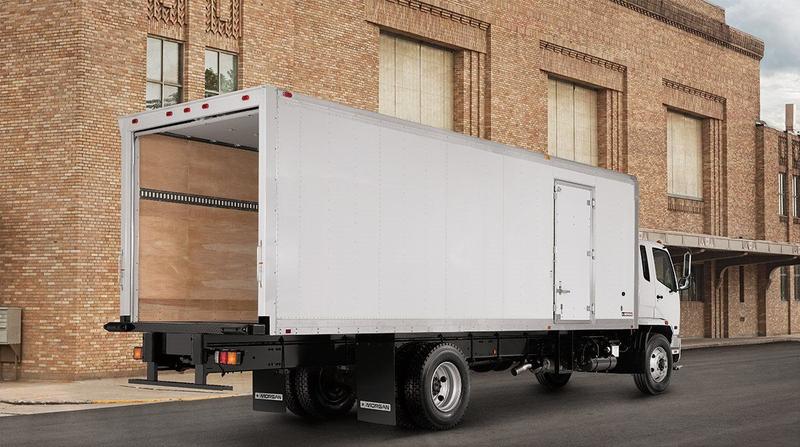views

The dry van truck stands as perhaps the most recognizable and ubiquitous vehicle in commercial freight transportation across North America. These versatile trucks form the backbone of the logistics industry, transporting countless goods along highways and interstates daily. With their distinctive boxy trailers and widespread adoption, dry van truck have become synonymous with road freight, yet many outside the transportation industry remain unaware of their specific characteristics, advantages, and limitations.
What Defines a Dry Van Truck?
A dry van truck consists of a tractor unit pulling an enclosed, box-shaped trailer designed to protect cargo from external elements. Unlike specialized transport vehicles such as refrigerated trucks or flatbeds, the standard dry van truck features a weather-resistant, rigid-walled trailer with no temperature control mechanisms. The term "dry" refers to the trailer's ability to keep cargo dry and protected from precipitation, while "van" describes the enclosed box design that distinguishes it from open trailers.
Typical dry van trailers measure 53 feet in length, 8.5 feet in width, and 9 feet in height, though 48-foot variants remain common in certain regions and applications. These dimensions have been optimized to maximize cargo capacity while maintaining compliance with federal and state transportation regulations. The standardized dimensions facilitate efficient loading and unloading operations across the supply chain.
Key Advantages of Dry Van Trucks
The widespread popularity of dry van trucks stems from several inherent advantages. Their enclosed design provides excellent protection for general freight against weather conditions, road debris, and theft. The standardized dimensions make them compatible with loading docks and warehousing facilities nationwide, streamlining logistics operations.
Additionally, dry van trucks offer exceptional versatility in cargo handling. A single truck can transport diverse goods ranging from packaged consumer products and electronics to manufacturing components and retail merchandise. This versatility allows carriers to minimize empty backhauls by securing varied return loads, optimizing operational efficiency.
The abundance of dry van trucks in the transportation market creates competitive pricing for shippers compared to specialized equipment. Their standardized nature also simplifies maintenance procedures and reduces parts inventory requirements for fleet operators, further enhancing cost-effectiveness.
Common Applications and Industries Served
The dry van truck dominates numerous sectors of the freight transportation industry. Retail supply chains rely heavily on these vehicles to move merchandise from distribution centers to stores, especially for non-perishable goods. Manufacturing operations depend on dry van trucks for inbound materials and outbound finished products, particularly for components and products that don't require specialized handling.
E-commerce fulfillment has dramatically increased demand for dry van transportation, as these trucks efficiently move packages from fulfillment centers to sorting facilities and distribution points. The pharmaceutical and healthcare industries utilize dry van trucks for medical supplies and equipment that don't require temperature control, while the publishing industry transports books, magazines, and printed materials predominantly via dry van.
Trade shows and exhibitions represent another significant application, with dry van trucks transporting displays, equipment, and promotional materials to venues nationwide. Their enclosed design ensures materials arrive in pristine condition regardless of weather conditions encountered en route.
Technological Advancements in Modern Dry Van Trucks
Today's dry van trucks incorporate numerous technological improvements that enhance safety, efficiency, and sustainability. Advanced telematics systems provide real-time tracking and monitoring capabilities, allowing fleet managers to optimize routes, improve driver performance, and ensure timely deliveries. These systems also facilitate preventative maintenance scheduling, reducing unexpected breakdowns and associated service disruptions.
Aerodynamic enhancements have significantly improved fuel efficiency in modern dry van trucks. Side skirts, roof fairings, and gap reducers between tractor and trailer collectively reduce drag, decreasing fuel consumption by up to 10% compared to older models. Many fleets have also adopted automated transmission systems that optimize shift points and reduce driver fatigue during long hauls.
Safety technologies have similarly evolved, with electronic stability control, lane departure warning systems, and collision mitigation becoming increasingly standard equipment. These features not only protect drivers but also safeguard valuable cargo and reduce insurance premiums for carriers.
Challenges and Limitations
Despite their versatility, dry van trucks face certain limitations. Their lack of temperature control makes them unsuitable for transporting temperature-sensitive goods such as fresh produce, frozen foods, or certain pharmaceuticals. The fixed dimensions of the trailer can present challenges when hauling oversized or irregularly shaped items that exceed standard loading dimensions.
Loading and unloading operations typically require dock facilities with appropriate height and equipment, limiting delivery options in locations without such infrastructure. Additionally, weight distribution within the trailer demands careful attention to ensure legal compliance and safe operation, particularly with dense or heavy cargo.
Environmental Considerations and Future Trends
The environmental impact of dry van trucks has received increasing scrutiny, prompting significant innovations. Electric and hydrogen fuel cell variants have begun entering the market, particularly for short and medium-haul operations. These zero-emission alternatives promise to dramatically reduce the carbon footprint of freight transportation while potentially lowering operational costs through decreased fuel and maintenance expenses.
Autonomous driving technologies continue advancing rapidly, with semi-autonomous dry van trucks already conducting test runs on select highways. Industry experts anticipate these technologies will gradually transform the sector, potentially addressing the persistent driver shortage while improving safety and efficiency.
Conclusion
The dry van truck remains an indispensable component of modern logistics, providing reliable, versatile transportation for countless products that sustain our economy. As technology evolves and environmental considerations gain prominence, these workhorses of the highway will undoubtedly continue adapting to meet emerging challenges while maintaining their central role in freight transportation. Their ubiquity on American highways stands as testament to their enduring utility and effectiveness in connecting manufacturers, retailers, and consumers in our interconnected economy.






















Comments
0 comment